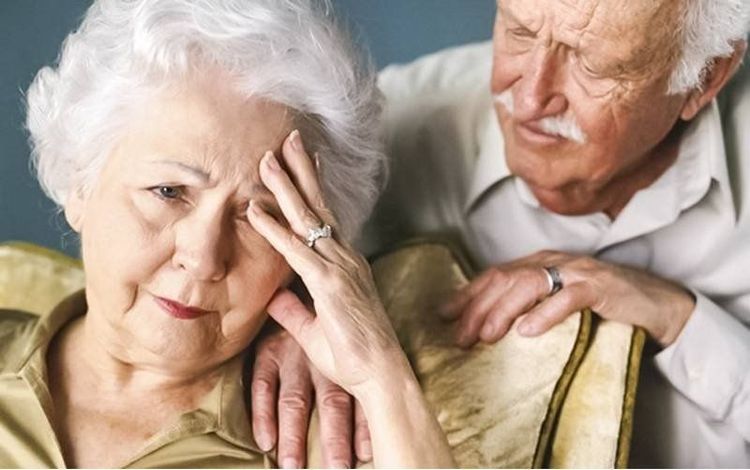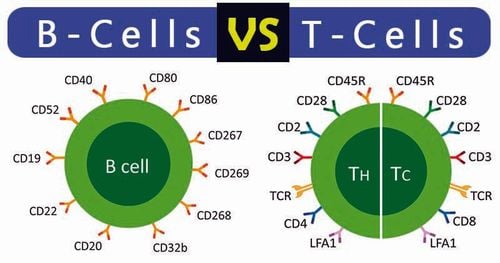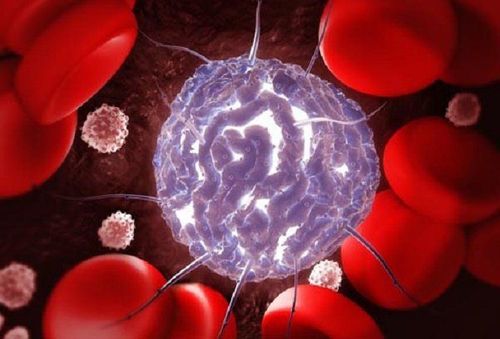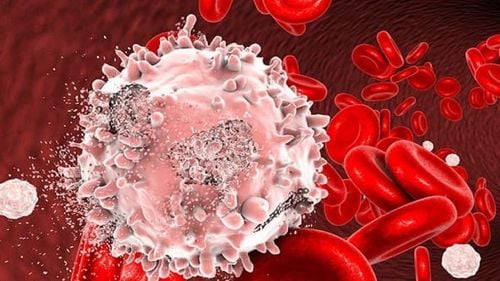This is an automatically translated article.
Chronic lymphocytic leukemia is a malignancy of the hematopoietic system that directly affects the lymphocytes in the body. Symptoms of chronic lymphocytic leukemia need to be detected early so that the patient can be diagnosed and treated promptly.1. Detecting symptoms of chronic lymphocytic leukemia
Usually, chronic lymphocytic leukemia is diagnosed when a doctor happens to notice an abnormal increase in the number of white blood cells in the blood while being treated for other unrelated conditions. The immune system of patients with chronic leukemia is not working properly, so it sometimes produces abnormal antibodies against the body's own normal blood cells, including red blood cells and platelets. Red blood cells are the cells responsible for carrying oxygen throughout the body, while platelets are an integral part of the blood clotting system.
The result of this is anemia and a low platelet count. Symptoms of chronic lymphocytic leukemia are often fatigue because the body cannot meet its oxygen needs and bleeding is difficult to stop due to lack of platelets. Patients with chronic lymphocytic leukemia may develop autoantibodies at any time, and the number of autoantibodies is unrelated to the severity of the disease. A person with a high number of autoantibodies cannot be concluded that the disease is advanced and vice versa.

Bạch cầu lympho mạn dẫn đến tình trạng thiếu máu
2. Signs of chronic lymphocytic leukemia
People with chronic lymphocytic leukemia may also face other signs of chronic lymphocytic leukemia such as:
Swollen lymph nodes in the neck, underarms or in the groin. This is a common sign that patients can usually recognize on their own first. Lymph nodes are enlarged but painless. Discomfort or tightness in the upper left abdomen due to the enlarged spleen. Fever, chills, night sweats, and weight loss Repeated infections Unusual bleeding Rapid shallow breathing, shortness of breath Feeling tired Full stomach, loss of appetite. The clinical signs of chronic lymphocytic leukemia are not really specific to suggest to the physician. Patients with other diseases are quite likely to have the same symptoms as mentioned above. Therefore, if you notice any unusual symptoms, you should consult a doctor immediately. The doctor will explore more information related to when and how long symptoms last, as well as other accompanying signs. This step helps to find the cause of the problem and lead to the establishment of a diagnosis. If leukemia is diagnosed, the appearance of clinical symptoms indicates an urgent need for care and treatment of the patient, which is mainly palliative or supportive treatment. During treatment, patients should be careful to inform their treating physician about changes in pre-existing symptoms and new signs.
Please dial HOTLINE for more information or register for an appointment HERE. Download MyVinmec app to make appointments faster and to manage your bookings easily.
Reference source: cancer.net
MORE:
Mechanisms of defense of the body of white blood cells Risk factors for chronic lymphocytic leukemia (CLL) Common types of leukemia













